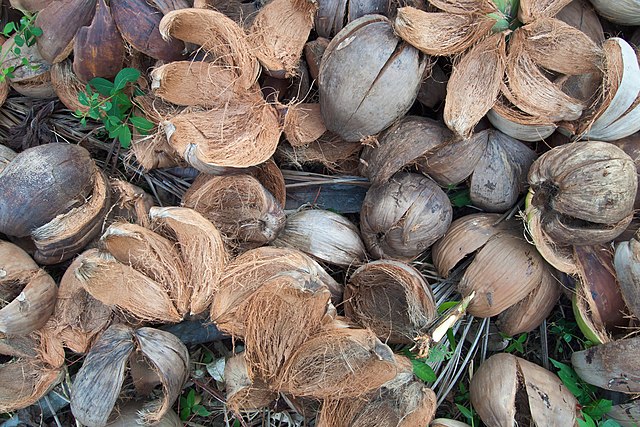A sharp Malay coconut shortage fanning unruly prices has prompted imports of over 66,000 of coconuts-in-shell.
It all began in May 2024 when Perak on the western coast and the northern peninsula reported coconut yield drops by 80 to 90%.
Coconut-reliant recent holidays like the Lunar New Year and Thaipusam have further stoked shortage, spiked prices and upped imports.
Price Kill
Prices first hiked by 1 ringgit ($0.22) in early February 2025 to 3.90 ringitt ($0.88) apiece, versus 2.60 ringitt ($0.58) previously.
Coconut milk then reached the 15-20 ringitt ($3.37-4.50) per kg range, while kelapa parut (grated coconut) hit 12 ringitt ($2.70).
The last stable price of coconut milk in Malaysia was 11 ringitt ($2.47) per kg in November 2024. Beforehand, the range around end October 2024 had been 9 to 10 ringitt ($2.02-2.25) per kg.
Of interest is that the price hike coincided with Thaipusam, a Hindu holiday where devotees break ample coconut shells. Administrators asked the faithful to show restraint in the number they break during this time of shortage.
Importing for Stability
Nearby import source Indonesia is not sparing Malaysia either for its prices are up by 3 ringitt ($0.67) a fruit.
Imports are nevertheless the last resort to stability, with the government distributing 661 tonnes of inbound coconuts before February 27.
Much of the hoard consists old harvest coconuts from source countries like Indonesia, Sri Lanka and Thailand.
The government promises to continue the import drive until the country can revert to pre-2016 domestic pricing.
Malay Coconut Regeneration Initiative
Speaking of which, the 12th Malaysia Plan initiative has helped replant 643.46 hectares since 2016.
The flagship Lembaga Perubuhan Pedalang (LPP) project has in the 7-year period ending February 2025 replanted 12,436 coconut trees.
It therefore looks like Malay coconuts could stay dear for a while till the government restores domestic stability. And as the statistics below indicate, this local stability comes at a high consumption counter-weight.
Malay Coconut Consumption Statistics
Malaysia is among the highest coconut-consuming nations at 745,657 tonnes annually, according to the Malaysian Agricultural Research and Development Institute (MARDI). It ranks the 10th highest in per capita consumption among 145 nations, per Helgi Library’s data. With a production best of 604,428 tonnes, Malaysia therefore normally needs to import over 250,000 tonnes annually. In early 2025 during acute shortage, the country was considering importing 500 tonnes of raw coconuts monthly.
How have Malay coconut consumption patterns changed historically?
Data by Helgi Library shows that consumption was highest in the 1961-2000 period at a consistent 14 to 15.1 kg per capita. Consumption fell from 2001 through 2021 to 8.03 kg per capita in 2021, albeit still high by world standards. In its part, MARDI’s data shows that consumption has fluctuated from 17 kg to 21.5 kg per capita between 2016 and 2021.
Who produces coconut in Malaysia?
Smallholder farmers produce over 84% of the national output. This is to say 5 times more than large estates produce. In 2015, for instance, small-scale producers harvested 425,027 tonnes of coconut shells while estates garnered 80,587 tonnes.
Has the coconut yield rate changed in Malaysia?
The yield rate of coconut trees diminished erratically from 7,828.2 kg/hectare (ha) in 2020 to 63.76 kg/ha in 2023.
